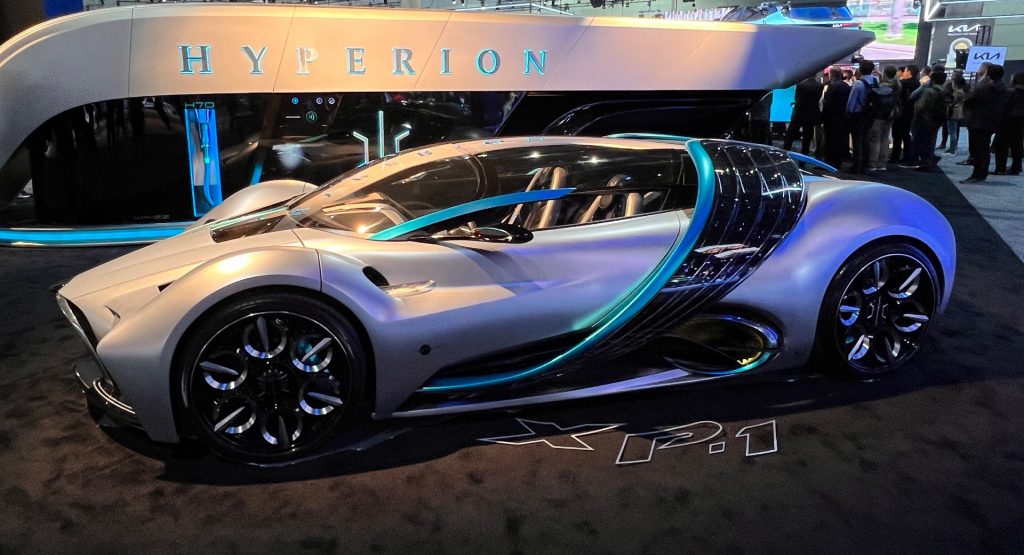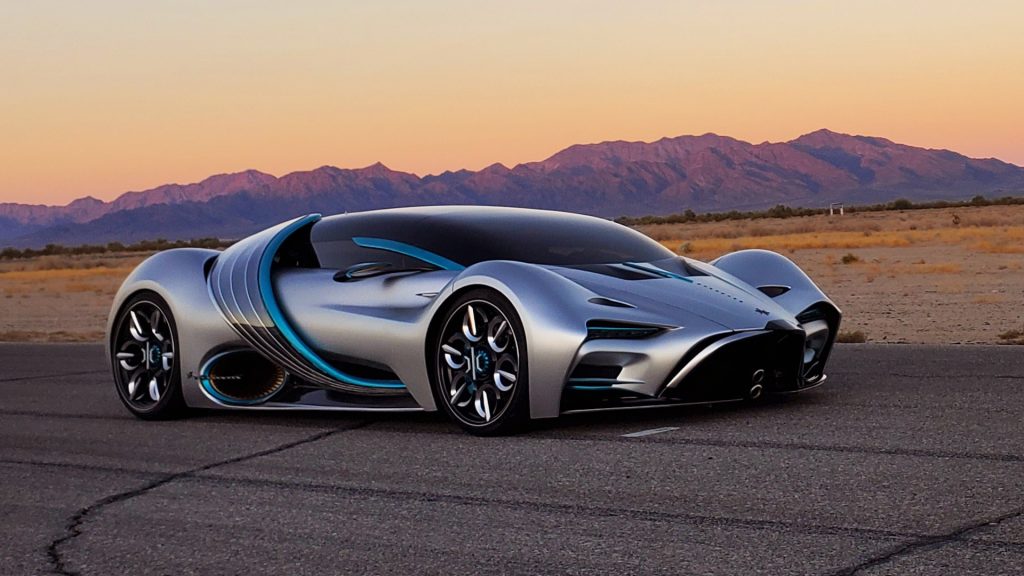In August 2020, the Hyperion XP-1 was initially introduced, and now it has debuted publicly. The Hyperion HP-1 prototype attracted a lot of interest as it displayed its cutting-edge design. Some people liked its design’s sleek distinctiveness, while others thought it was just too strange. The public debut of the hydrogen car at the Los Angeles Auto Show gave it the chance to show off what it’s really about.
The Hyperion HP-1 prototype drew substantial attention as it showed off its futuristic styling. This design drew mixed reviews, with some enjoying its sleek uniqueness while others simply found it too weird. It isn’t difficult to see why it would appeal to some and not others. The entire look is unconventional, with atypical proportions, wild intakes, and shapes jutting outward from the bodywork, including the solar panel-covered adjustable blades.

The Hyperion XP-1 can be taken as a prime example of what a hydrogen-powered car can do. For those of you who haven’t heard about this manufacturer, they are new to the automotive business. Unlike other manufacturers using hybrid or fully electric powertrains, they have worked on creating a hydrogen fuel-cell hypercar that has 2000+ hp and a range of 1000+ miles.

The XP-1 has some crazy figures in terms of both efficiency and performance. It comes with a 2038 hp powertrain that sources energy from a hydrogen propulsion system and can do 0-60 in just 2.25 seconds and achieve a top speed of 221 mph. Built on carbon fiber and titanium monocoque chassis, the XP-1 weighs just about 2275 lbs, which is far less than EV hypercars and even less than some combustion supercars like the McLaren 720s.
Hyperion’s goal is to build 300 units of its XP-1 hydrogen car in the United States. It has not yet set the pricing for this vehicle but expects to release the amount at a later time. Originally, the goal was to start production of the vehicle at the start of 2022. That said, it’s clear that the California-based startup has postponed that timing.


